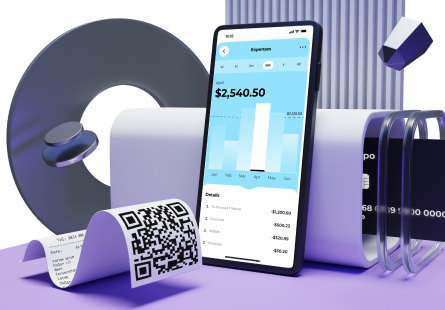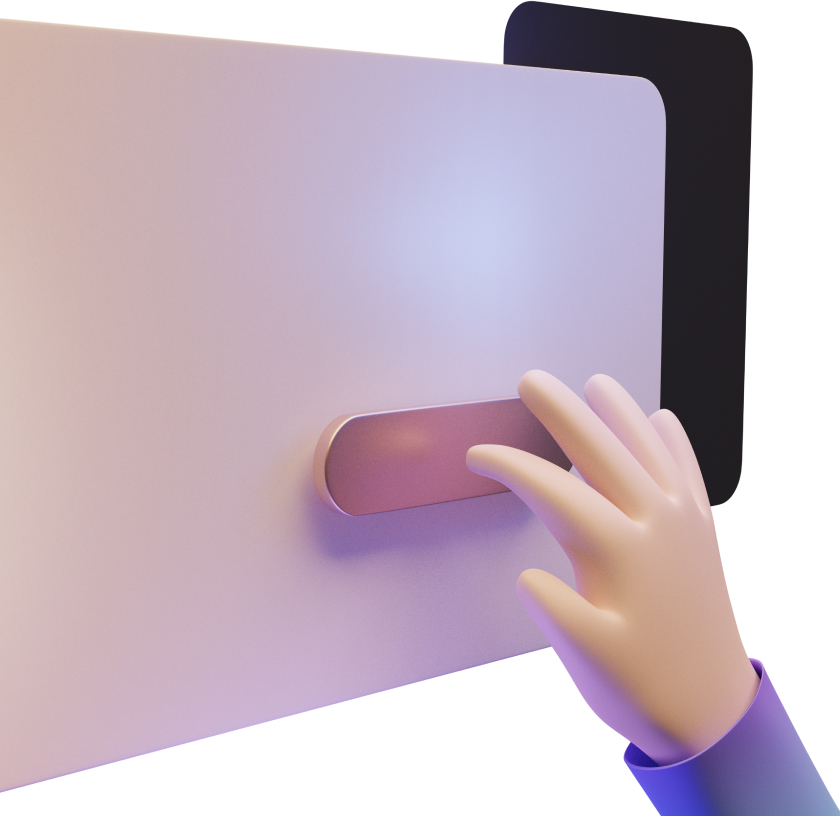There’s little wonder that fintech apps are all the rage today. They introduce unprecedented convenience to people’s financial lives by allowing them to conduct financial transactions, participate in stock trades, exchange crypto assets, manage insurance, and do other tasks directly from their smartphones.
Such a popularity of financial applications undoubtedly makes them an attractive business option. If you’re interested in building a fintech app, stay with us. In this guide, we’re explaining how to build a fintech app and much more.
Fintech market today: a brief overview
Fintech companies provide financial products and services to other businesses. The cloud-based nature of modern fintech solutions enables businesses to integrate and use financial technology without developing them in-house.
Today, fintech providers offer a wide range of financial services and solutions, including payment processing platforms, digital wallets, mobile banking apps, P2P lending platforms, financial management tools, and insurance technology solutions, to name a few.
According to Forbes, the biggest fintech industry players in 2024 include Ant Group, Stripe, Revolut, Chime Financial, Rapyd, Plaid, Brex, GoodLeap, and Bolt.
Estimated at $294.74 billion in 2023, the global fintech market is forecast to grow to $340.10 billion in 2024 and reach $1,152.06 billion by 2032.
One of the major drivers behind such growth was the introduction of open banking, a UK government initiative that allowed third-party software providers to access banking data through APIs (Application Programming Interfaces). Open banking enables fintech companies to use traditional banks’ data to deliver innovative digital banking solutions and enhance customer experience.
The COVID-19 pandemic is also believed to facilitate the growth of the fintech industry. Fair enough, since businesses and consumers have massively switched to online and mobile banking, creating an unprecedented demand for digital solutions. Also, the pandemic has introduced the need for contactless payments, increasing the demand for digital wallets.
Fintech apps by type
If you’re considering fintech app development as a business opportunity, you need to decide which type of financial solution you want to build. Here’s an overview of the most common types of fintech apps to help you make your choice.
Mobile banking apps
Digital banking apps, such as Revolut, enable consumers to use banking services entirely online, removing the need to visit physical branches. These mobile applications allow users to open accounts, transfer funds, pay utility bills, access customer support, and more.
Payment and money transfer apps
Fintech applications of this type let users make electronic payments, money transfers, and peer-to-peer transactions with just a few clicks. Popular examples include PayPal and Venmo.
Insurtech apps
Insurtech applications like Lemonade are designed to streamline traditional insurance processes, providing automated claims processing, personalisation, and risk assessment tools.
Trading and investment apps
Fintech apps of this kind provide users with a platform where they can invest in stocks, bonds, cryptocurrencies, and other assets. Modern trading and investment apps like Robinhood use AI to facilitate data-driven portfolio management and risk assessment.
Personal finance apps
Personal finance apps like Mint allow users to track expenses, create budgets, set financial goals, and manage their overall finances.
Tax management apps
Tax management applications help users prepare and file taxes electronically, providing guidance, tax calculators, and e-filing options. One of the most prominent examples is TurboTax.
Exchange apps
Fintech applications of this type are designed to let users buy, sell, or trade various financial assets, such as cryptocurrencies, stocks, bonds, commodities, and derivatives.
Key features in fintech applications
Fintech apps can include various features and functionalities depending on their type and target audience. Let’s explore the most common features of fintech applications.
User authentication
Powerful authentication mechanisms, such as biometric and two-factor authentication, ensure secure access to fintech apps and protect users’ sensitive financial information.
Alerts and notifications
Alerts and push notifications keep users informed about important account activities, such as low balances, upcoming bills, or suspicious transactions.
Account management
This feature enables users to create, manage, and customise their accounts, including setting preferences, linking bank accounts, and updating personal information.
Transaction history
The transaction history tool lets consumers view and track transaction details such as dates, amounts, and categories, helping them monitor spending and manage finances more effectively.
Payment and money transfer
Implementing this feature requires integration with payment gateways and financial institutions to enable electronic payments, transfers between accounts, and peer-to-peer transactions.
Expense tracking and budgeting tools
These features let users set budgets, categorise expenses, and track spending in real-time. They usually come with notifications for overspending or reaching budget limits.
Customer support
Fintech apps usually include access to customer support channels, such as in-app messaging or live chat, which allow users to report issues and get answers to their questions.
Additional features
Besides basic features, fintech app developers often add extra functionalities that enhance the user experience. Here are some examples:
Educational content
Fintech app providers can offer articles, videos, or tutorials to help users develop their financial literacy.
Bill management
This feature allows users to manage recurring bills, set up automatic payments, and get reminders about upcoming due dates.
Cashback and rewards programs
Many fintech apps offer users incentives for particular transactions, such as earning cashback on purchases or receiving rewards points for using the app.
Dashboard
Dashboards provide a visual representation of users’ financial accounts, transactions, and activities.
Social payments
This feature lets users split bills with friends or family, send gift money, and crowdfund within their networks.
Social networking
Thanks to social networking tools, users can connect with other users and share financial achievements.
Tech stack for fintech app development
Like any other type of application, fintech apps comprise three layers: frontend, backend, and data. App users interact with the frontend, the backend handles server-side operations, and the data layer is responsible for managing application data.
Choosing the proper technology stack for building a fintech app is critical to the product’s success. Programming languages, libraries, frameworks, tools, and technologies used in fintech app development determine the app’s performance, security, scalability, and integration capabilities.
Cloud computing is another critical component of fintech app development. Cloud services allow fintech companies to store, access, and process massive volumes of data on the cloud, removing the need for costly hardware infrastructure.
Here’s a breakdown of the go-to technologies trusted by fintech developers to build secure and high-performing fintech apps.
Backend
Fintech applications rely on backend technologies to process data and ensure performance, speed, and security. Programming languages and frameworks typically used in fintech application development include Java, C#, Python, Ruby on Rails, JavaScript, Spring Boot, Django, Flask, Kotlin, Objective-C, Swift, Go, Scala, Rust, Elixir, Lua, TypeScript, and Express. In addition, fintech developers widely use Node.js, a server-side runtime environment for JavaScript that enables fast and scalable application development.
Frontend
The choice of frontend technologies directly affects the quality of the user interface. Fintech developers usually use JavaScript and its frameworks to deliver a seamless, swift, and intuitive user experience. React, Angular, Vue, and Bootstrap are libraries and frameworks widely used in fintech app development.
Data
Fintech apps constantly produce massive amounts of data, calling for a robust database infrastructure to store and manage it. PostgreSQL, MySQL, MS SQL Server, Oracle, MongoDB, and Cassandra are the most reliable options for financial applications.
Cloud services
Cloud-based infrastructure allows fintech companies to seamlessly scale their applications, store and process massive volumes of data, and use powerful computing resources without extensive on-premises infrastructure. The most favoured cloud computing and hosting technologies used in fintech app development include Amazon Web Services (AWS), Microsoft Azure, Google Cloud Platform (GCP) and IBM Cloud.
How to build a fintech app step-by-step
High demand, intense competition, regulatory requirements, and security considerations require a meticulous approach to building fintech apps. Let’s take a detailed look at the key steps of the fintech app development process.
1. Ideation & research
The ideation phase involves understanding the problem, carrying out research, generating ideas, and defining the project goals. Everything starts with determining the type of the app, its target audience and their pain points — your application should effectively address them.
Do extensive research to analyse your target market and competition. This will provide you with valuable insights on how to make your product stand out. Also, determine how you will monetise your app. The most widespread strategies include subscription, freemium, transaction fees, commissions, licensing, in-app purchases, advertising, and data monetisation.
2. Defining the features & the tech stack
Next, define the core features and functionality of your fintech app. Prioritise essential features that provide value to users. You can also implement advanced features to cater to your specific user base and differentiate your solution from competitors.
Select the appropriate technology stack based on factors like scalability, performance, and integration capabilities. Focus on frameworks and libraries offer a high level of security.
3. Ensuring regulatory compliance
The financial industry is one of the most tightly regulated sectors. Research the regulatory landscape of your target market and apply for the necessary licences. Also, explore the legal requirements for fintech apps, such as GDPR, PCI-DSS, and KYC/AML, and ensure your application complies with them.
4. UI/UX design
The UI/UX design phase is crucial to creating a successful fintech app. The competition is high, so your task is to come up with an intuitive user interface and a seamless user experience, resulting in a user-friendly application that is aesthetically pleasing and effortless to navigate. At this stage, you may already have ideas and references to share with the UI/UX team.
To validate your ideas, build wireframes and prototypes to visualise and test your app’s layout, functionality, and navigation.
A wireframe is a static simulation of the product concept that provides an outline of the page structure, layout, and information architecture. It can be produced on paper or digitally. Work with the key stakeholders to improve the wireframes until you’re satisfied with the result.
Once you finish with wireframing, you can create a prototype — an interactive simulation of the app a user can navigate to complete basic tasks. Test it with a small group of users to collect feedback on functionality, ease of navigation, and usability, and use this feedback to make improvements.
5. Building an MVP
Although it’s optional, consider building a minimum viable product (MPV). An MVP is a version of a fintech application with limited functionalities. It will let you verify the assumptions from the design phase and gather early feedback from real users without spending much time and resources.
Moreover, developing an MVP allows the development team to continue the process following an iterative approach, which consists in adding new features and improvements based on user feedback.
6. Full-scale development
This step involves developing the backend and the frontend of your application, translating the design and MVP into a fully functional fintech app. During the development phase, the development team also integrates the app with third-party services and APIs.
7. Testing
It’s crucial to carry out thorough testing and quality assurance to detect and promptly address any bugs, errors, or usability issues in your fintech app. At this stage, testing experts employ a combination of automated and manual testing methods and perform a range of tests, such as unit testing, integration testing, functional testing, performance testing, security testing, and user testing, to check different aspects of the app and ensure it runs as intended.
8. Deployment and launch
Once the testing phase is complete and your fintech app is ready for release, it is deployed to the production environment. Now, submit your application to the app stores and run a marketing campaign to advertise your product.
Conclusion
The growing demand for digital financial services provides a lucrative business opportunity for fintech startups and established companies. While building a fintech app is a time- and resource-intensive process, a strategic approach and a professional team can help you achieve desired results and nail your business goals.
If you’re looking to build a fintech app, the team at DeepInspire can help. We boast decades of experience in fintech software development and a versatile and robust tech stack, which allow us to build high-performing and secure fintech apps.







